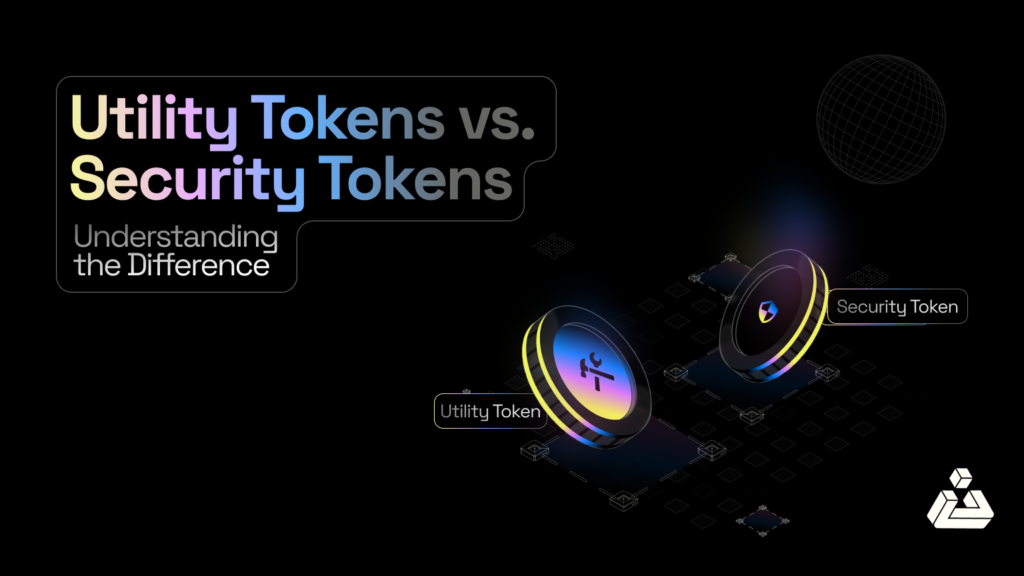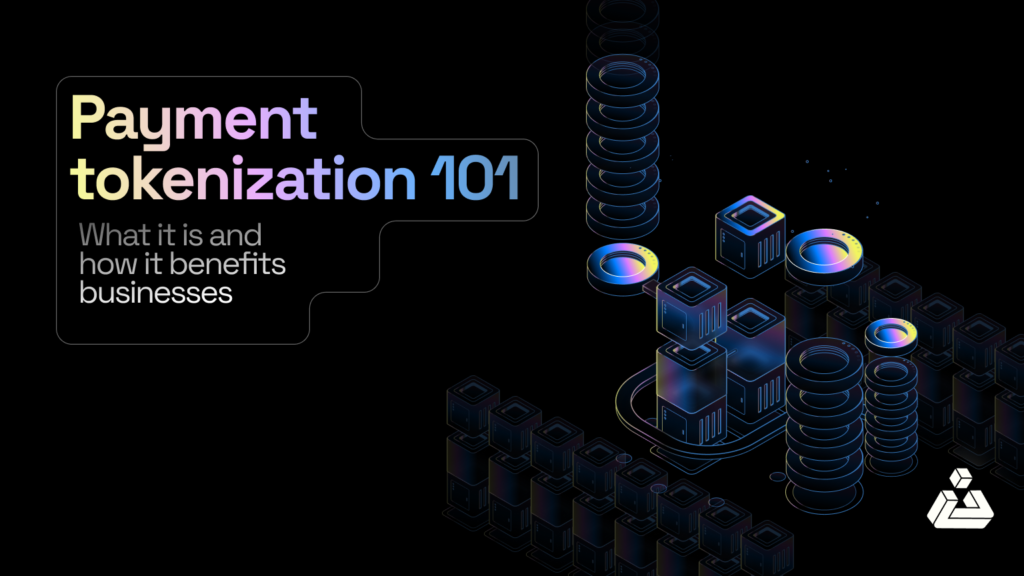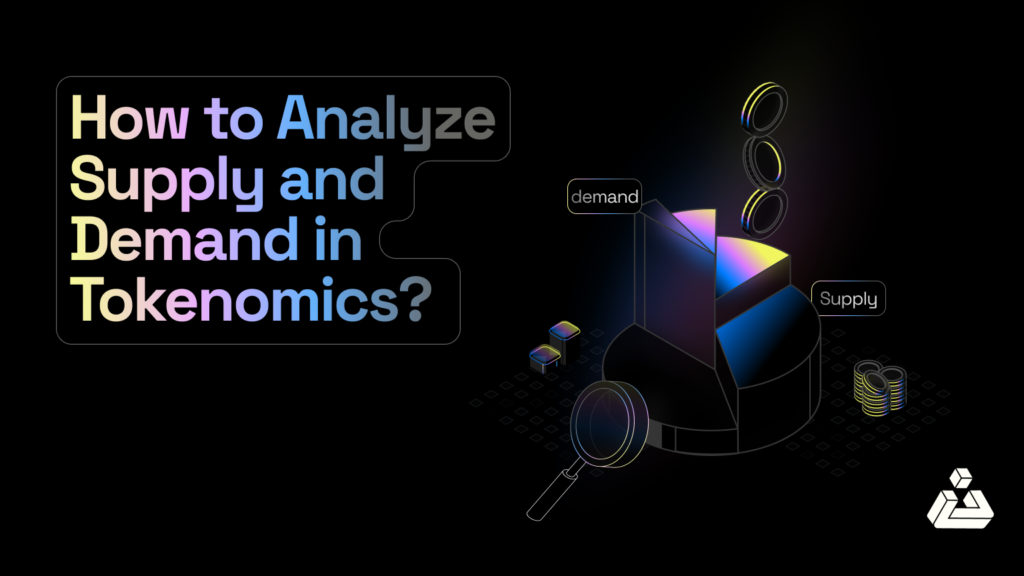When people are introduced to Blockchain, they are essentially introduced to tokens. These tokens enable users to obtain something, whether it is a perk, service, or gaining access to functionality. Now, there can be multiple types of tokens. Among the many types of tokens, utility tokens, and security tokens stand out as two of the most important and widely discussed. While they both operate on blockchain technology and can be traded on exchanges, their fundamental purposes use, and regulatory frameworks differ significantly. This article aims to comprehensively understand these two token types, including detailed explanations, examples, and the legal implications surrounding them.
What are Utility Tokens?
Utility tokens are a type of digital asset created on a blockchain, designed to grant access to specific products or services within a particular platform or ecosystem. Unlike traditional currencies or securities, utility tokens are not meant to be investments. Instead, they are functional tokens that power the operations of decentralized applications (DApps), decentralized finance (DeFi) platforms, or blockchain networks.
These tokens can be thought of as the “fuel” that powers blockchain ecosystems. Without utility tokens, users wouldn’t be able to access certain features or perform tasks on a given platform.
How Utility Tokens Work
Utility tokens typically function within a closed environment, where they are required to interact with the platform’s services or applications. They often have several specific use cases. Some of them are:
- Payment for services: Users can use utility tokens to pay for transactions or services on the platform.
- Governance: Many platforms use utility tokens for governance, allowing holders to vote on platform upgrades or changes.
- Incentives and rewards: Users can earn utility tokens as rewards for completing tasks or contributing to the network.
Utility tokens are not designed to generate passive income for holders, nor do they represent a stake in a company or asset. Their value is usually tied to the demand for the platform’s services, rather than an underlying financial asset.
Examples of Utility Tokens
Several well-known blockchain platforms use utility tokens as the core of their ecosystems:
Ethereum (ETH):
- Purpose: ETH is the native token of the Ethereum blockchain, and it’s used to pay for “gas” fees to execute smart contracts or transactions on the network.
- Use Case: Anyone who wants to build or use DApps on the Ethereum network must use ETH to pay for computation on the Ethereum Virtual Machine (EVM).
- Function: This makes ETH a utility token, as it provides access to network functionality rather than representing ownership or investment.
- Market Cap: $275.48 billion
- Fully Diluted Value (FDV): $275.48 billion
- All-Time High (ATH) Market Cap: $574.83 billion
- 24-Hour Trading Volume: $5.89 billion
- Volume (24h) / Market Cap: 0.0214
- Total Supply: 120,323,926 ETH
- Circulating Supply: 120.32 million ETH (100% of Total Supply)
- Listing Date: July 30, 2015
- ICO Price: $0.311 (September 2, 2014)
- ICO ROI: 736,082% (7,362x)
- All-Time High Price: $4,860 (November 10, 2021)
- All-Time Low Price: $0.421 (October 21, 2015)
Filecoin (FIL):
- Purpose: Filecoin is a decentralized storage network where users can rent out unused storage space or store their data in exchange for FIL tokens.
- Use Case: FIL tokens are used to pay storage miners who provide space and also serve as collateral for ensuring that data is stored securely.
- Function: FIL acts as the utility token that enables access to the Filecoin network’s storage services.
- Market Cap: $2.02 billion
- Fully Diluted Value (FDV): $6.76 billion
- All-Time High (ATH) Market Cap: $14.94 billion
- 24-Hour Trading Volume: $57.29 million
- Volume (24h) / Market Cap: 0.0284
- Max Supply: 1,960,103,800 FIL
- Total Supply: 1,959,980,351 FIL
- Circulating Supply: 584.68 million FIL (29.8% of Max Supply)
- Listing Date: December 13, 2017
- ICO Price: $1.91 (September 8, 2017)
- ICO ROI: 80.9% (1.81x)
- All-Time High Price: $235.59 (April 1, 2021)
- All-Time Low Price: $2.59 (December 16, 2022)
Basic Attention Token (BAT):
- Purpose: BAT is a utility token designed for the Brave browser ecosystem. It rewards users for viewing ads and can be used by advertisers to pay for ad space.
- Use Case: BAT tokens enable advertisers, users, and content creators to participate in a new advertising model without traditional intermediaries.
- Function: Users can earn and spend BAT within the Brave ecosystem, making it a functional token for interaction and participation.
- Market Cap: $239.99 million
- Fully Diluted Value (FDV): $240.74 million
- All-Time High (ATH) Market Cap: $2.89 billion
- 24-Hour Trading Volume: $2.55 million
- Volume (24h) / Market Cap: 0.0106
- Max Supply: 1,500,000,000 BAT
- Total Supply: 1,500,000,000 BAT
- Circulating Supply: 1.50 billion BAT (99.7% of Max Supply)
- Listing Date: June 1, 2017
- ICO Price: $0.036 (May 31, 2017)
- ICO ROI: 345.8% (4.46x)
- All-Time High Price: $1.94 (November 28, 2021)
- All-Time Low Price: $0.0662 (July 16, 2017)
Advantages of Utility Tokens
- Community Building
Utility tokens help foster a strong community by allowing users to participate in the ecosystem, creating a loyal and engaged user base. These tokens are often used for governance, encouraging users to take part in the project’s development. - Increased Engagement
Token holders tend to be more involved and engaged with the project, as holding tokens often comes with access to special features, governance voting, or rewards. This can create an active user base that contributes to the ecosystem’s growth. - Revenue Generation
Projects can generate revenue by issuing and selling utility tokens during token offerings (such as ICOs), enabling early-stage projects to secure funding without traditional venture capital. - Incentivizing Adoption
Utility tokens can be used as a tool to incentivize early adopters to use the platform or service. By rewarding users with tokens, projects can drive growth and adoption while also encouraging participation.
Disadvantages Of Utility Tokens
- Speculative Trading
Although not designed as investment vehicles, utility tokens often become subject to speculative trading. This can result in high volatility, where prices are driven more by market speculation than actual utility or platform adoption. - Limited Utility
The value and use of utility tokens are tied to the success of the platform. If the project fails to deliver its services or experiences technical difficulties, the token’s utility may decrease, reducing demand and value. - Regulatory Uncertainty
The regulatory uncertainty for utility tokens often stems from the possibility that they could be classified as securities. So, the regulatory framework for utility tokens remains unclear in many regions. A key way to determine this is the Howey Test, a legal standard established by the U.S. Supreme Court to identify whether a transaction qualifies as an ‘investment contract’ under securities law.
If a utility meets the criteria of Howey Test, it could be reclassified as a security, subjecting it to more strict regulations. This creates ongoing legal challenges for many token issuers. - Centralized Control
While utility tokens often operate within decentralized ecosystems, the projects behind them may retain significant control over the network or platform. This can reduce the degree of decentralization and leave decision-making in the hands of the developers, creating a potential centralization risk.
What Are Security Tokens?
Security tokens are a type of blockchain-based asset that represents ownership in an external asset or a stake in a company. These tokens are similar to traditional financial securities such as stocks, bonds, or derivatives, but they exist on a blockchain. Security tokens often provide holders with rights like dividends, profit-sharing, or governance in a company.
In contrast to utility tokens, security tokens are typically issued during Security Token Offerings (STOs) and are often seen as digital representations of an underlying tradable asset. They derive their value from this external asset, whether it be equity in a company, real estate, or a commodity.
How Security Tokens Work
Security tokens represent ownership or stake in an external asset, and their value is tied directly to the asset they represent. Common use cases for security tokens include:
- Equity tokens: Represent ownership in a company or organization, similar to traditional shares of stock.
- Debt tokens: Represent ownership of debt, entitling the holder to interest payments or repayment of principal.
- Real estate tokens: Represent ownership or partial ownership of real-world properties.
These tokens can be traded on specialized exchanges that comply with securities regulations, offering liquidity to traditionally illiquid assets. Holders may receive financial benefits such as dividends, profit-sharing, or voting rights, depending on the structure of the token.
Examples of Security Tokens
-
- SPiCE VC (SPICE):
- Purpose: SPiCE VC is a venture capital fund that issues security tokens representing a share in the fund.
- Use Case: SPICE token holders receive a portion of the fund’s profits and can trade these tokens on secondary markets.
- Function: SPICE tokens provide investors with liquidity while representing their stake in the venture capital fund.
- Status: Funding Round
- SPiCE VC (SPICE):
- Polymath:
-
-
- Purpose: The platform aims to streamline the process of issuing and trading security tokens by providing the necessary tools and infrastructure for compliance, legal documentation, and technical requirements.
-
- Use Cases: Polymath simplifies the creation and management of security token Initial Coin Offerings (ICOs). It helps issuers navigate regulatory requirements and ensures that their security tokens are compliant with existing securities laws.
-
-
- The platform also supports the trading of security tokens, allowing for increased liquidity and market accessibility for these types of assets.
-
- Market Cap: $51.14 million
- Fully Diluted Value (FDV): $56.92 million
- All-Time High (ATH) Market Cap: $1.03 billion
- 24-Hour Trading Volume: $2.42 thousand
- Volume (24h) / Market Cap: 0.0000472
- Total Supply: 1,000,000,000 POLY
- Circulating Supply: 898.55 million POLY (89.9% of Total Supply)
- Listing Date: February 2, 2018
- ICO Price: $0.400 (January 13, 2018)
- ICO ROI: -85.8% (0.142x)
- All-Time High Price: $1.66 (February 19, 2018)
- All-Time Low Price: $0.0103 (March 13, 2020)
Advantages of Security Tokens
- Increased Efficiency: Blockchain technology automates and simplifies the issuance, trading, and settlement of security tokens. This reduces the reliance on traditional intermediaries, cutting down on costs and processing times.
- Immutability and Transparency: Security tokens benefit from the inherent features of blockchain technology, such as immutability and transparency. These features help minimize the risk of fraud and ensure that all transactions are secure and verifiable.
- Access to Secondary Markets: Security tokens can be traded on specialized exchanges, providing liquidity to assets that are traditionally illiquid. This improved liquidity can lower transaction costs and make it easier for investors to buy and sell tokens.
- Cross-Border Transactions: Blockchain technology enables seamless cross-border transactions, allowing investors from around the world to access and invest in tokenized assets. This global reach increases market potential and investment opportunities.
- Fractional Ownership: Security tokens allow for fractional ownership of high-value assets like real estate or private equity. This democratizes investment opportunities, making it possible for smaller investors to participate in markets previously reserved for larger players.
Disadvantages of Security Tokens
- Regulatory Uncertainty: The regulatory landscape for security tokens is still developing. This creates uncertainties for issuers and investors, as compliance requirements can vary across different jurisdictions and may change over time.
- Market Volatility: The market for security tokens can be volatile, with prices subject to significant fluctuations. This volatility can impact investment returns and make it challenging for investors to assess the value of their holdings.
- Technical Limitations: Blockchain technology, while innovative, is not without risks. Technical issues or vulnerabilities in the blockchain infrastructure could affect the security, performance, or functionality of security tokens.
- Diverse Offerings: The security token market lacks a standardized framework, which can make it difficult for investors to compare different token offerings. This lack of standardization can lead to confusion and increased risk.
- Issuer Reliability: Investors in security tokens are still exposed to counterparty risk, particularly if the issuer faces financial difficulties or fails to fulfill their obligations. This risk is similar to traditional investments, despite the blockchain’s transparency.
To get a better understanding, here is a comparison table between utility tokens and security tokens:
| Feature | Utility Tokens | Security Tokens |
| Purpose | Provides access to a platform or service | Represents ownership or investment in an asset |
| Underlying Value | Tied to the utility of the platform | Tied to the external asset’s value or revenue |
| Functionality | Used within the platform for services, payments, governance | Represents equity, debt, or rights to assets; may offer dividends or profit-sharing |
| Examples | Ethereum (ETH), Filecoin (FIL), Basic Attention Token (BAT) | tZero (TZROP), SPiCE VC (SPICE), RealT |
| Regulation | Less regulated; generally not considered securities but can be scrutinized | Heavily regulated under securities laws (e.g., SEC in the U.S.) |
| Investment Expectation | Generally, no direct profit expectation; utility is key | Direct expectation of profit from investment or asset appreciation |
| Liquidity | Often traded on a wide range of cryptocurrency exchanges | Can be traded only on regulated platforms; typically less liquid |
| Issuance Process | Frequently issued through ICOs (Initial Coin Offerings) | Issued through STOs (Security Token Offerings) with strict compliance |
| Holder Rights | Limited to functional usage (e.g., governance, payment for services) | Often includes voting rights, dividends, profit-sharing, or equity stakes |
The Importance of Regulatory Compliance
In 2023, the U.S. Securities and Exchange Commission (SEC) alleged that SOL was an unregistered security. The SEC’s argument centered on the notion that Solana’s developers and community played a central role in its development and distribution, suggesting a common enterprise akin to a traditional investment contract. This reclassification affected Solana’s trading, exposing it to strict legal requirements for transparency, investor protection, and reporting.
Utility Token Regulation
The legal framework for utility tokens is generally less stringent compared to security tokens, but there is still regulatory oversight, especially when utility tokens are sold through Initial Coin Offerings (ICOs). Many regulators, including the U.S. Securities and Exchange Commission (SEC), scrutinize ICOs to determine whether the tokens being offered are truly utility tokens or if they function more like securities.
For example, Ethereum (ETH), though widely considered a utility token today, was initially scrutinized by regulators to ensure that it wasn’t being sold as an investment contract. If a token is determined to be a security in disguise, the platform could face penalties for violating securities laws.
Security Token Regulation
Security tokens are explicitly regulated by financial laws, such as the Securities Act of 1933 and the Securities Exchange Act of 1934 in the U.S. Issuers of security tokens must register their tokens with the appropriate financial regulatory bodies or qualify for an exemption. This involves significant legal and financial reporting requirements to protect investors.
In the U.S., the SEC uses the Howey Test to determine whether a token is classified as a security. The test assesses whether:
- There is an investment of money,
- In a common enterprise,
- With the expectation of profits,
- Derived from the efforts of others.
If a token meets these criteria, it is considered a security, and the issuer must comply with securities regulations. Failure to do so can result in severe legal consequences, including fines and restrictions on token trading.
Global Regulatory Landscape
Different countries take different approaches to regulating utility and security tokens:
- Switzerland: The Swiss Financial Market Supervisory Authority (FINMA) distinguishes between utility tokens, payment tokens, and asset tokens (security tokens), providing clarity on their regulatory treatment.
- European Union: The EU’s Markets in Crypto-Assets Regulation (MiCA) aims to establish a consistent regulatory framework for crypto assets, including utility and security tokens.
- China: China has taken a strict stance on cryptocurrency trading and ICOs, but its regulatory environment for security tokens remains less defined.
- Japan: Japan allows the trading of utility tokens but requires exchanges to register with the Financial Services Agency (FSA). Security tokens are heavily regulated under traditional securities laws.
Final Thoughts
The rise of tokenization in blockchain has opened new possibilities for decentralization, financial innovation, and asset ownership. Utility tokens and security tokens represent two different facets of this revolution. While utility tokens enable access to decentralized services and platforms, security tokens offer a new way to invest in assets using blockchain technology. As the blockchain space continues to mature, understanding the distinction between these two types of tokens will be crucial for developers, investors, and regulators alike.












